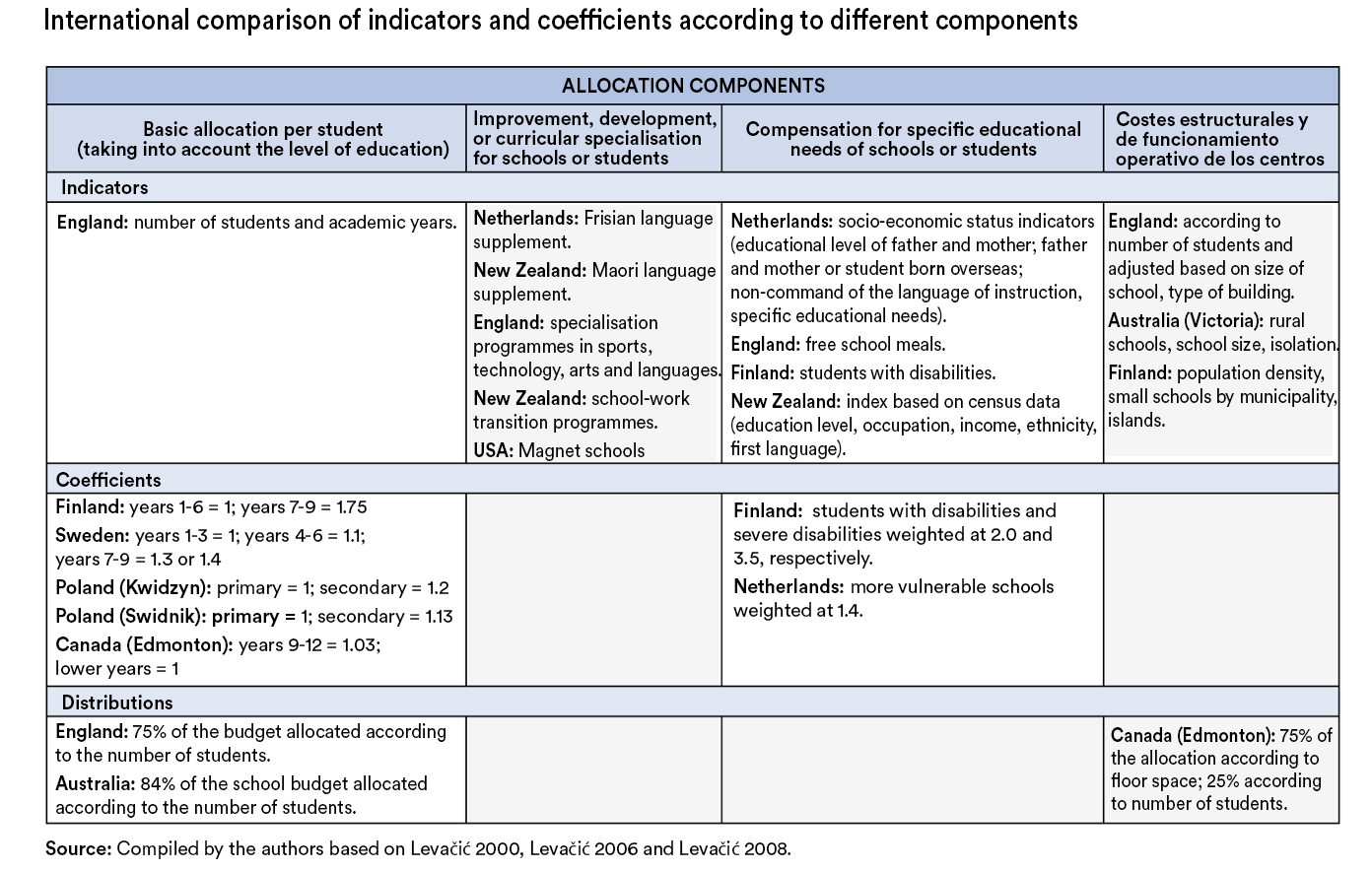International experiences of formula funding
11/11/2021

Countries such as Finland, Sweden, the Netherlands, the United Kingdom and Canada have for years had an FF system which includes a certain equity factor to allocate additional funds to more disadvantaged schools, being synonymous with a tool for good governance, transparency and efficient management. Indeed, the vast majority of OECD education systems have an FF system where the equity factor can have more or less weight depending on the case.
Information: The Bofill Foundation calls for the extraordinary 570 million euros from Covid-19 to be consolidated and allocated to the most complex schools using a new funding formula that takes the needs of the schools into consideration (publication in Catalan)

In Europe, the United Kingdom and the Netherlands are prime examples. They have both FF models in place since the 1970s.
Related: Read the article FAQS: formula funding, explained
United Kingdom: National Funding Formula + Pupil Premium
England adopted the first funding formula mechanisms during the 1970s, with the aim of compensating for the educational needs of the most disadvantaged schools and students. At the time, the criteria and calculations for the allocation of funds were the responsibility of the local education authorities.
Related: Download the summary document The equity formula
Since then, the weighting of school vulnerability variables in the funding allocation formula has fluctuated. Among the most recent reforms, the introduction in 2018 of the “National Funding Formula” is noteworthy. It brings together the 152 funding formulas that were maintained at local level into a single scheme that pursues improved horizontal equity. This formula allocates less weighting to the variables of social composition.
Related: Read the interview with Marcel Pagès, co-author of the proposal
The formula is complemented by various schemes to focus funds towards the most disadvantaged schools. Among these schemes, on a national scale is the well-known Pupil Premium. This additional funding was introduced in 2011 and is directly allocated to schools based on student-related indicators with the goal of increasing the school achievement of the most vulnerable students and reducing performance gaps.
Related: Download the brief report
This model has been shown to be effective for the targeted improvement of support to and performance of the most disadvantaged pupils. Schools receive the Pupil Premium funding for each student who is a beneficiary of the programme. There are currently three eligible student profiles that are able to receive different levels of funding allocation. In the case of “disadvantaged pupils”, who receive free school meals, schools receive £1,320 for primary school students and £935 for secondary school students. For students who are looked after or have previously been looked after by a local authority, each school receives £2,300 per student.
The Netherlands: focus on formula equity
Under the umbrella of the priority education policy, a formula funding system was put in place in the Netherlands in 1985 with the purpose of allocating additional funds to primary schools which had more students in socially disadvantaged conditions, mainly working-class students and, in a second implementation phase of the formula, students of immigrant origin.
Related: Download the summary document The equity formula
In the 1990s, the formula was implemented in a general fashion across the entire education system, backed by major reform of school governance to encourage broader decentralisation. Decisions related to allocation and distribution of financial resources among schools remain relatively centralised, while in the area of budget management schools have maintained a large degree of independence.
This funding system benefits from broad political consensus, which reinforces its equity component, and allocates almost double the funding for students in a socially disadvantaged situation
In terms of the allocation criteria, until the mid-2000s the formula was composed of three variables which referenced the parents’ occupation, education level and country of origin. Since 2006, the formula has been simplified and is based solely on the education level of families, partly to eliminate the migratory factor from the formula, which has been called into question for political reasons. This funding system benefits from broad political consensus, which reinforces its equity component, and allocates almost double the funding for students in a socially disadvantaged situation.
Following the example of these countries, the formula proposed in The equity formula. Fairer funding for schools report places significant importance on the social and academic vulnerability of school students. Thus, it acknowledges that more complex schools, whether government-run or government-subsidised, need more funds than the remainder and indeed more funds than they receive with the current funding system.
Do you want to learn more about the formula funding for Catalonia proposal?
- Read the summary document of the report
- Download the full report
- Read the interview with Marcel Pagès
Retrieve the report presentation
